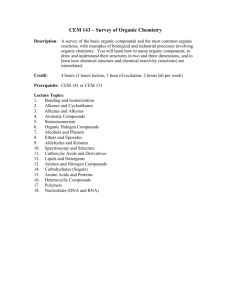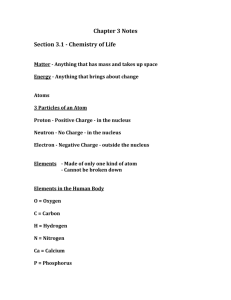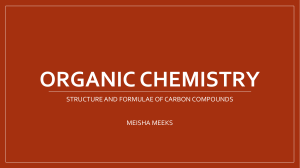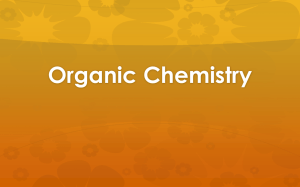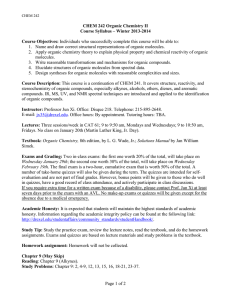1.7 L2 Functional groups and the naming of organic compounds
advertisement
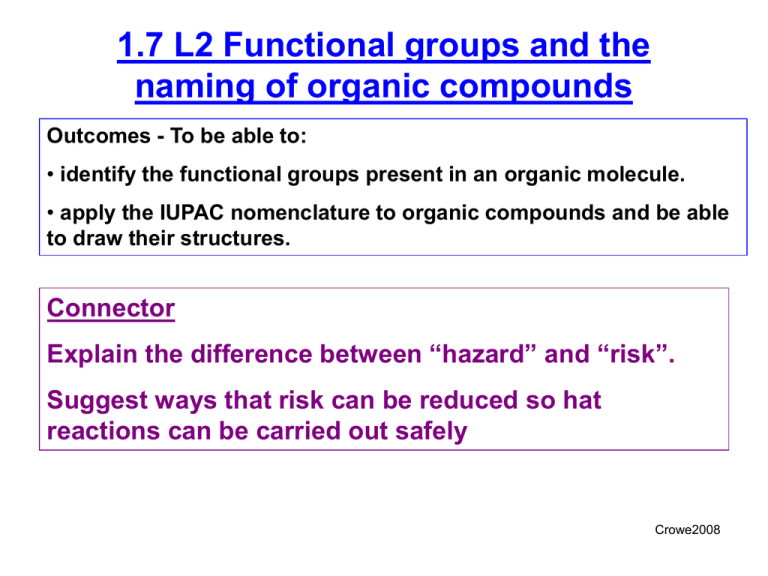
1.7 L2 Functional groups and the naming of organic compounds Outcomes - To be able to: • identify the functional groups present in an organic molecule. • apply the IUPAC nomenclature to organic compounds and be able to draw their structures. Connector Explain the difference between “hazard” and “risk”. Suggest ways that risk can be reduced so hat reactions can be carried out safely Crowe2008 Functional groups & homologous series Functional groups - a single atom or group of atoms that are largely responsible for determining the chemical properties of organic compounds. Homologous series – • A family of organic compounds containing the same functional group. • They can be represented by a general formula, and each member of the series differs from the next by a single CH2 group. • The members of a particular homologous series show similar chemical properties, but gradually changing physical properties. Resource sheet 1/ Class sheet 1 Naming organic compounds 1. Identify the functional group(s) present – this gives you the type of compound 2. Find the longest carbon chain – this gives you the parent compound Meth = 1 But = 4 Eth = 2 pent = 5 Prop =3 hex = 6 etc. 3. Name, with numbered position, the groups attached to the longest carbon chain – always do this so that the lowest numbers are used. Note: A methyl group is CH3A propyl group is CH3CH2CH2- An ethyl group is CH3CH2etc. Examples 2-methylpentane 2,2-dimethylbutane 2,3-dimethylbutane 3-ethyl-2-methylhexane. Examples 2 propene. cyclohexane CH3-CH=CH-CH3 but-1-ene but-2-ene 3-methylhex-2-ene Examples 3 1,1,1-trichloroethane. 2-bromo-2-methylpropane. 1-iodo-3-methylpent-2-ene. Examples 4 2-methylpropan-1-ol. ethane-1,2-diol. Class sheet 2 Worksheets 1 & 2





